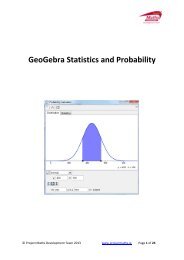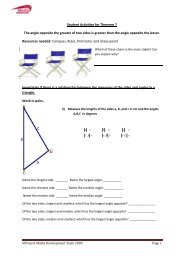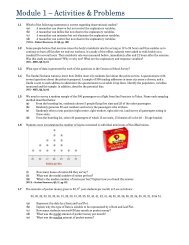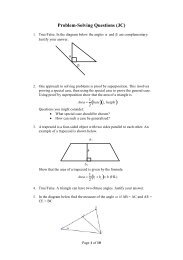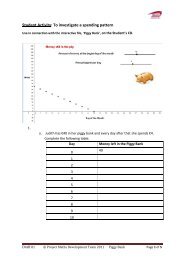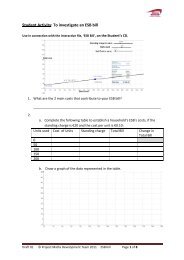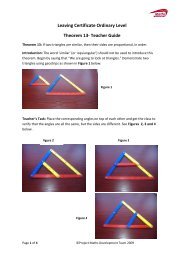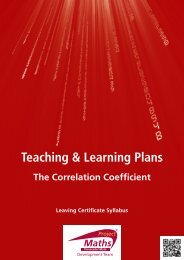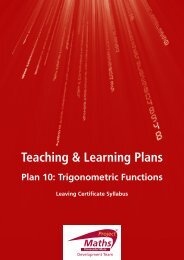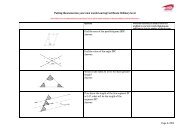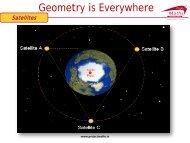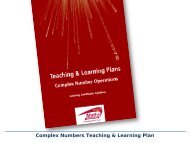Plan 3: Fair Trials with Two Dice - Project Maths
Plan 3: Fair Trials with Two Dice - Project Maths
Plan 3: Fair Trials with Two Dice - Project Maths
Create successful ePaper yourself
Turn your PDF publications into a flip-book with our unique Google optimized e-Paper software.
© <strong>Project</strong> <strong>Maths</strong> Development Team 2009 www.projectmaths.ie KEY: » next step • student answer/response 8<br />
Teaching & Learning <strong>Plan</strong> 3: <strong>Fair</strong> <strong>Trials</strong> <strong>with</strong> <strong>Two</strong> <strong>Dice</strong><br />
Student Learning Tasks:<br />
Teacher Input<br />
»» What is the relationship<br />
between the experimental<br />
approach to calculating<br />
probability and the<br />
theoretical approach<br />
»» How do we calculate the<br />
theoretical probability<br />
of each outcome in this<br />
sample space<br />
»» What assumption are we<br />
making<br />
»» Are all 36 outcomes equally<br />
likely here<br />
»» Construct a probability<br />
table (Student Activity 3)<br />
for the sum of 2 dice using<br />
Student Activity 2A.<br />
»» Assuming that both of the<br />
dice are fair, and all 36<br />
outcomes are equally likely,<br />
what is the probability of<br />
the sum being 5<br />
»» What is the sum of the<br />
probabilities for the sample<br />
space<br />
Student Activities: Possible<br />
and Expected Responses<br />
• As the number of trials<br />
increases the relative<br />
frequency becomes almost<br />
equal to the theoretical<br />
probability.<br />
• How many times it<br />
occurs divided by the<br />
total number of possible<br />
outcomes.<br />
• All outcomes are equally<br />
likely.<br />
• Yes.<br />
Teacher’s Support and<br />
Actions<br />
»» Asks students to recall and<br />
then after a short pause<br />
asks an individual.<br />
»» Walk around observing<br />
students as they fill out the<br />
probability table.<br />
• Using the 2 way table<br />
(Student Activity 2A)<br />
showing the sample space<br />
constructed for the game,<br />
there are 4 outcomes for<br />
5, so the probability of<br />
getting a 5 is 4/36.<br />
• 1<br />
»» Ask students if they<br />
remember this happening<br />
in the last lesson <strong>with</strong><br />
outcomes from 1 die<br />
Checking Understanding<br />
»» Can students recall how to<br />
calculate probability for<br />
equally likely outcomes<br />
»» Did students fill out the<br />
table correctly<br />
»» Did all students get 1



